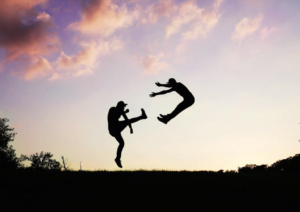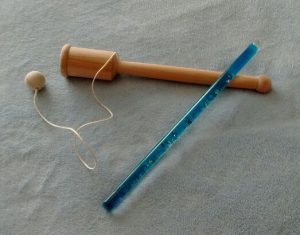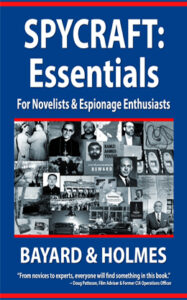
Fight scenes are essential when it comes to so many genres, which is one reason that one of my all-time favorite courses I’ve ever taught was Bulletproof Barbie. The second reason that was my favorite class? As an editor and avid reader, nothing can make or break a story—on the page or on the screen—like fight scenes. Do them well, and it’s fuel to get the blood pumping. Botch the fight scene? And…
*sound of record screeching*
Even the WAY our characters fight can mean the difference between making them likable or unlikable.
Though I am always happy to teach on this topic, today we have a guest expert, Piper Bayard from the writing duo Bayard & Homes.
Take it away, Piper!
How to Write Fight
A great fight scene is arguably the heart of every thriller. We all have our favorite ways of doing violence–in fiction, of course–but our stories are most interesting if we never use the same attack method twice in the same book. As a result, we fiction writers are always looking for a new twist on a fight scene.
Since Jay Holmes of Bayard & Holmes is a 45-year veteran of the military and intelligence communities, we are often asked what weapons we prefer for fights. As Holmes says, “My favorite weapon is my radio. I use it to call in air strikes.” However, in lieu of having the US Air Force in our backpacks, we writers can ‘punch up’ our fight scenes by using common objects as weapons.
We could give you a list of common objects that can be used as weapons, but that would actually limit you. That’s because with the right attitude, virtually anything can be used as a weapon. Which brings me to attitude—the first ingredient to surviving a fight.
Attitude & the Fight
My husband (not Holmes) literally has to teach karate black belts self-defense because skill with punches, kicks, and weapons is irrelevant if a person doesn’t understand the kill-or-die mindset that is so often necessary to survive a battle outside of a refereed ring. In other words, the most important weapons a character brings to a fight are their heart and their mind.
They must be determined to do whatever it takes to keep themselves safe and disable or kill their opponent. Once they see the world in those terms, potential weapons are everywhere.
Before we continue, the recovering attorney in Piper demands that we make it clear
that this post is not meant to be formal instruction in self-defense.
In truth, we advocate firearms training for the best self-defense, but shooting too many people in books tends to make for boring books. So we’re going to explore a bit more about common objects as weapons—strictly for the purposes of writing fictional fight scenes.
If we can stab with it, it’s a weapon. If we can jab with it, it’s a weapon. If we can use it to hit someone, it’s a weapon. If we can throw it, it’s a weapon.
When we think of a fight in this new way, almost everything in our environment is a potential weapon. Holmes and I have literally killed off people in our books with a cactus, knitting needles, and a sheep. To be fair, the sheep was an active participant, but you get the idea.
Let’s do an exercise right now. I’ll do it with you.
Let’s look around our immediate environment and ask ourselves these questions:
Can I stab with it?
The pens and pencils here on my desk can stab out an eye or puncture a jugular vein.
Can I jab with it?
These handy thought facilitators, a.k.a. desk toys, could jab an eye, throat, or a groin to give me a fighting advantage. This newspaper can be rolled up tight and jabbed into a groin, a kidney, or an eye.
Can I hit with it?
The pottery lamp could double as a bat, or my computer could be the extra weight and reach I need to land a blow. . . . I know what you’re thinking. Yes. My computer really is old enough to be a heavy weapon. I’m going to use it as a brick in a custom design in my house someday.
Can I throw it?
Books! And look . . . My first manuscript. No one has survived that one. This glass elephant or the heavy glass pencil cup should be good for a concussion, or at least a distraction so that I can grab the lamp. . . . And there’s a cup of hot tea!
We’re going to pause a moment to consider hot beverages. Hot beverages are the versatile pay dirt of social interactions, including a good fight. Since one ‘picture’ is worth a thousand words . . .
One of my acquaintances—a seriously bad@$$ retired French Foreign Legion guy who we’ll call “T”—owns a bar in Texas. One night, a couple of men were causing trouble with the clientele, so he booted them out. When he closed down the bar, he armed himself in case the two undesirables were hanging out for another round of unpleasantries. He poured two cups of coffee.
Wait! Coffee? . . . Wouldn’t this bad@$$ grab something more impressive like nunchakus, a knife, or a gun?
Nope. Just coffee. Sure enough, the idiots tried to jump T between the building and his car. T threw the steaming coffee in their eyes and took out their knees with a couple of kicks while they screamed. . . .
The lesson? Never underestimate the power of a hot beverage.
The hot beverage container can also be an effective weapon. My husband carries his metal mug with him everywhere he goes. It can be used to block a knife or strike an opponent . . . Coffee. Never get in a fight without it.
Extra Credit Challenge: As you go through your day, look around each space you enter, study your environment, and repeat the above questions to yourself. You’ll be amazed to be surrounded by so many weapons.
Now that we have a weapon, where do we strike?
Anywhere we can. It’s all well and good to imagine a nice Hollywood fight where we grab a kitchen knife and slide it perfectly between the ribs and into the heart of a bad guy who is holding still for us. In real life, attackers aren’t usually so accommodating. It’s much more effective to keep in mind some sensitive body parts and go for whatever openings present themselves in that split second.
Eyes are at the top of the list of sensitive parts. Some bleach, salt, coffee, sand, or anything else that can be painful, and blinding an opponent (even temporarily) is always a good move.
We might ask why the groin is not at the top of the list.
The groin is a great target. However, people, particularly men, are quite adept at protecting their tender bits, so the groin shot might not be the easiest blow to land.
Other key body parts that can distract or disable if impacted are the ankles, shins, knees, kidneys, solar plexus, ears and the throat. And of course, there’s a good old-fashioned blow to the temple, which can be lethal. Keep in mind that any blow that is hard enough to cause the head to turn is more likely to produce a concussion or even death than a blow that does not spin the head.
Now that we’re actually in the struggle, I’ll reiterate that the most important weapons are the heart and mind.
Don’t be set on any one move. Instead, go with the fight and take the shots that present themselves. Be aware that one jab won’t be enough. Follow through, and don’t stop just because they fall—they won’t necessarily stay down. Our characters must be willing to stay on the opponent until they are clearly dead or disabled, and recovery isn’t an option.
Bottom Line:
A fight for survival can be the most creative part of a book. Just remember to stab, jab, whack, or throw, and don’t stop until the opponent is clearly dead or at least completely down for the count.
Thank you, Piper!
What’s funny is I LOVE horror movies, campy ones in particular. The movie The Babysitter is not only AWESOME, but it is a fabulous study of how to use everyday objects to evade, escape, defend and even attack. Why I love this movie in particular is the MC is a 12-year-old-boy who’s hopelessly bullied. Let’s say, Jason Bourne he is not. But when this kid fights back against a murderous cult literally out for his blood?
He is BRILLIANT!
Other than The Bourne Identity, another great movie to study is The Accountant to see in action—bada bump snare—what Piper has described in this blog. In The Accountant there are actually some excellent scenes where the MC uses—YES—his coffee thermos to inflict major damage.
We LOVE Hearing from You!
What common objects did you find that could be used as weapons?
Do your characters have any particular ‘weapons’ they prefer?
 SALE!
SALE!
FINAL DAYS ONLY $2.99 — Click Here
What do the main intelligence agencies do and where do they operate? How do they recruit personnel? What are real life honey pots and sleeper agents? What about truth serums and enhanced interrogations? And what are the most common foibles of popular spy fiction?
With the voice of over forty years of experience in the Intelligence Community, Bayard & Holmes answer these questions and share information on espionage history, firearms of spycraft, tradecraft techniques, and the personalities and personal challenges of the men and women behind the myths.
Though crafted with advice and specific tips for writers, SPYCRAFT: Essentials is for anyone who wants to learn more about the inner workings of the Shadow World.
“For any author, this is the new bible for crafting stories of espionage.”
~ James Rollins, New York Times Bestselling Author of The Demon Crown

Piper Bayard and Jay Holmes of Bayard & Holmes are the authors of espionage tomes and international spy thrillers. Please visit Piper and Jay at their site, BayardandHolmes.com. For notices of their upcoming releases, subscribe to the Bayard & Holmes Covert Briefing. You can also contact Bayard & Holmes at their Contact page, on Twitter at @piperbayard, on Facebook at Piper Bayard, or at their email, BayardandHolmes@protonmail.com.
Classes!
Introduction to Podcasting 10/15/21
Register HERE and use New20 for $20 off before October 5th
Writing for Podcasting 10/22/21
Register HERE and use New20 for $20 off before October 15th
How to Make MONEY & The Business of Podcasting 10/26/12
Register HERE and use New20 for $20 off before October 15th
The Pod People Podcasting Bundle: ALL THREE Classes ONE Low Price
Register HERE to get all three classes and save BIG!
Practice Your Pitch: Master the Log-Line 10/20/21
Register HERE and use Pitch10 for $10 off if register by 10/1/21
The Edge: How to Write Mystery, Suspense & Thriller 10/21/21
Register HERE and use Thrill10 for $10 off if you register by 10/14/21












3 comments
1 ping
I may or may not have once used my wife and young teen daughter to help me figure out staging for a fight/shooting once. It’s hard to visualize that stuff sometimes.
Thank you, Kristen! It’s an honor to be here on your site.
I look at my wireless phone–down someone’s throat would be bad for them. Unless I whack them in the windpipe first (I am short, so reaching the eyes is not always my best bet). I have 5,000 books in this house. I have heavy things on my mantel. I would hate to lose the huge beer stein that my mom spent hours painting, but well, I like to live, too.
I occasionally watch Jackie Chan in movies do the ‘found object’ attack, which is always pretty enlightenment. Oh, and I have a bunch of pens on my desk! G. Gordon Liddy once terrified one of his co-workers by pretending to have fun with a sharpened pencil. Oh, and there are cords all over the place.
To quote Calvin from Calvin & Hobbes, “There’s treasure *everywhere*!”
[…] Fight Scenes: Deep Cover & How to Write the Good Fight […]